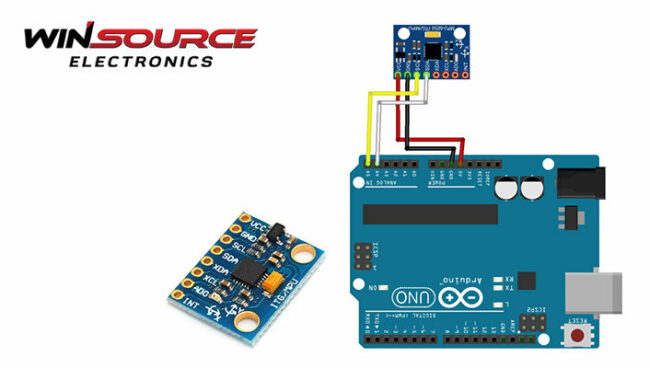
An accelerometer is a tool that gauges a structure’s vibration or acceleration of motion. It has been one of the most useful things nowadays. But to ensure the best result, you must know some information to choose the right one.
In this matter, you can rely on the best marketplace of Asia, which is WIN SOURCE.
Our company is determined to give the best service with the freshly imported original electronic components. You will not be displeased with our customer service and delivery process.
Let’s move on and discuss the basic information you should know about accelerometer sensors.
Table of Contents
ToggleHow does an accelerometer work?
An accelerometer sensor typically has a known, damped mass maintained in place by components like springs and used to monitor motion relative to the device. Utilizing a technique like piezoelectric voltage, capacitance, or optical means, the deflection of the springs is detected. The bigger the mass’s deflection and, thus, the higher the acceleration sensed, the higher the measured value.
An accelerometer can detect a device, phone, or vehicle’s orientation. Multi-axis accelerometers track the direction gravity is pushing by sensing variations in the direction in which the weight of the mass falls, which naturally indicates which way is down.
Types of Accelerometer Sensors
1. Piezoelectric Accelerometer Sensor
The piezoelectric accelerometer sensor works on the premise of using the quartz crystal or ceramic piezoelectric effect. The force the mass exerts on the piezoelectric element changes as the accelerometer vibrates.
The force change is proportional to the recorded acceleration when the measured vibration frequency is significantly lower than the natural frequency of the accelerometer.
2. Piezoresistive Accelerometer Sensor
The piezoresistive accelerometer sensor, which is based on the top MEMS silicon micromachining technology in the world, is widely used in the field of equipment vibration monitoring, test instruments, and automobile crash experiments because of its small size, low power consumption, and other advantages.
3. Capacitive Accelerometer Sensor
Based on the capacitance concept, the capacitive accelerometer sensor is a capacitive sensor with a changeable pole pitch. A capacitive accelerometer detects and logs surface or object vibrations. It comprises an oscillator or any other fixed element capable of storing capacitance.
The capacitive accelerometer’s built-in sensors detect the created capacitance or energy when these components move. The sensors are coupled to electrical circuitry that analyzes the electrical current to determine the strength and size of the acceleration.
4. Servo Accelerometer Sensor
The servo accelerometer sensor is a closed-loop test system with strong dynamic performance, wide range, and good linearity. According to its operating theory, the vibration system of the sensor is made up of the “MK” system, which is identical to the standard accelerometer.
Still, a mass m is coupled to an electromagnetic coil. The mass veers from equilibrium when the base is subjected to acceleration input. It is picked up by the displacement sensor, amplified by the servo amplifier, and transformed into a current output.
The servo accelerometer sensor operates in a closed-loop mode as the current passes through the electromagnetic coil and creates an electromagnetic restoring force in the magnetic field of the permanent magnet to maintain the mass in the original equilibrium position inside the instrument enclosure.
Now you know how important it is to choose the right sensor for the utmost result, which is why it is safe to consider WIN SOURCE. We are always available for you with a good range of quality products. So, what are you thinking? Check out our available products and order now.

COMMENTS